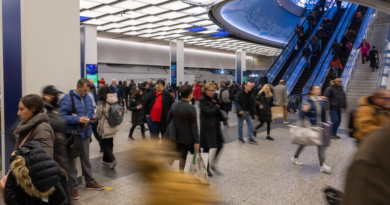Incentives give builders a 2023 housing market advantage—here’s how much are they forking out on the deals
The housing market is still reeling from mortgage rates that are hovering around 7%, following a short-lived era of historically low rates. And while every sector within the housing market is vulnerable to those spiked interest rates, there is one segment that’s outperforming the rest: the new-construction home market.
That’s happening for two reasons, says Devyn Bachman, senior vice president of research and operations at John Burns Research and Consulting. First, amid last year’s mortgage rate shock, builders rolled out aggressive incentives, including mortgage rate buy-downs. Second, spiked mortgage rates have created a lock-in effect, which has seen existing inventory decline as homeowners refuse to give up their lower mortgage rates.
“The incentive environment remains a significant driver of sales in the new home [market],” Bachman said. “The total incentive as a percentage of sales price on average is about 4% nationally, and that’s elevated.”
In a normal market, Bachman says, total incentives as a percentage of sales price would hover around 1% to 2% in the new-home market. If you think about a $1,000,000 home, a 1% incentive comes out to $10,000 worth. “So when you talk about getting to a 4% incentive, that’s pretty sizable,” Bachman said.
Maybe it’s not a $1,000,000 home; maybe it’s a $600,000 home. If you’re getting a 4% incentive on that sales price, you’re saving $16,000 in some shape or form (4.2% is the national average total incentive as a percentage of sales price, per John Burns’ data). That figure varies across regions and markets; it’s highest in the Southwest, which includes Nevada, Arizona, Utah, Colorado, and New Mexico, at 6.6%. So on a $400,000 home in the Southwest, you’re looking at $26,400 worth of incentives. The Southwest, in particular, benefitted from considerable in-migration, at which point the region saw massive home price appreciation over the last few years, Bachman said. At the same time, markets like Phoenix also overbuilt.
“It created an affordability crunch, it put more inventory on the ground than the market needed, and it’s feeling the pain of that today,” Bachman said, which is partly why we’re seeing that higher incentive figure, along with the fact that in her view, the Southwest region is “struggling the most.”
Either way, builders can afford to offer incentives to close the deal because it’s better to cut into their margins than lose the sale. Still, their margins are currently elevated, Bachman said, pointing to research that covers publicly traded homebuilders like D.R. Horton and Lennar—both of which climbed spots on the Fortune 500.
“So even despite offering these sizable incentives, they’re still getting outsize margins,” Bachman said. “That’s why they’re able to offer these incentives, and really that’s helping them garner most of the demand.”
Mortgage rate buydowns are the number one incentive builders are offering. Other incentives include closing costs assistance and price cuts, all of which play to consumer mentality. With mortgage rate buy-downs, builders pay a lump sum of money to reduce a buyer’s initial mortgage rate. Buydowns can be temporary, like the two-to-one rate buy-down that lowers the rate two percentage points in the first year and one percentage point in the second year, and in the third year the buyer pays the note rate. Bachman said it varies dramatically by builder, but consumers are really pushing for the full-term buy-down, which is obviously more costly as it lowers the rate for the entire loan term.
“If you look back at 2022, payments rose 38% year over year, and the vast majority of that came from the change in the interest rate environment,” Bachman said, referring to the change in an average mortgage payment. “So when you get that rate buy-down, that’s really at the heart of what consumers want.”
Currently, new homes represent 11% of all sales and 30% of all inventory, according to Bachman, particularly because there’s so little resale supply. Cue the lock-in effect, the second part of the equation mentioned earlier. It happens when mortgage rates go up and borrowers that have locked in lower rates hold on to their homes instead of selling, in fear of losing those low rates in exchange for a much higher interest rate. As Fortune’s previously covered, several homeowners are either choosing not to sell their homes or even becoming “accidental landlords,” constraining both sides of the market and largely limiting supply amid already tight inventory.
Still, there’s a bit more to it, Bachman said. For one, there’s a lot of equity in the housing market right now. As of the fourth quarter of last year, homeowner equity was around $31 trillion and debt was only $12 trillion, Bachman said. On top of that, 41% of homeowners don’t even have a mortgage payment, she added.
“Some of these people out there have a ton of equity, which by the way is at risk because home prices in most markets have declined year over year and 41% of them don’t even have a mortgage at all,” Bachman said. “You’re talking about selling a home and agreeing to take on a mortgage payment when you don’t even have a mortgage payment to begin with today.”
So the question is how much longer the new construction home market will continue to outperform all other housing sectors, particularly as the spring season comes to an end and we head into the summer months.
“As rates settle, as mortgage rates eventually ease, I do believe that you will see a rise in resale inventory,” Bachman said, later adding, “As supply rises, it’s going to create competition for the new home market. And my hypothesis is that you will see a balance between new-home sales and resale sales again, once those supply levels normalize.”



